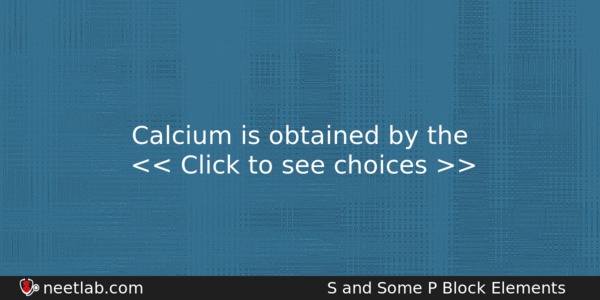| ⇦ | 
| ⇨ |
Calcium is obtained by the
Options
(a) electrolysis of solution of calcium chloride in water
(b) electrolysis of molten anhydrous calcium chloride
(c) roasting of limestone
(d) reduction of calcium chloride with carbon
Correct Answer:
electrolysis of molten anhydrous calcium chloride
Explanation:
No explanation available. Be the first to write the explanation for this question by commenting below.
Related Questions: - Which of the following statements about H₃BO₃ is not correct
- Among the following pairs of ions, the lower oxidation state in aqueous solution
- The angular momentum of electron in ‘d’ orbital is equal to
- Chinese white is
- Copper pyrite, the chief ore of copper, is
Topics: S and Some P Block Elements
(157)
Subject: Chemistry
(2512)
Important MCQs Based on Medical Entrance Examinations To Improve Your NEET Score
- Which of the following statements about H₃BO₃ is not correct
- Among the following pairs of ions, the lower oxidation state in aqueous solution
- The angular momentum of electron in ‘d’ orbital is equal to
- Chinese white is
- Copper pyrite, the chief ore of copper, is
Topics: S and Some P Block Elements (157)
Subject: Chemistry (2512)
Important MCQs Based on Medical Entrance Examinations To Improve Your NEET Score
18000+ students are using NEETLab to improve their score. What about you?
Solve Previous Year MCQs, Mock Tests, Topicwise Practice Tests, Identify Weak Topics, Formula Flash cards and much more is available in NEETLab Android App to improve your NEET score.
Share this page with your friends

Calcium is obtained by electrolysis of molten CaCl2
Calcium is obtained by the electrolysis of a fused mass consisting of six parts calcium chloride and one part calcium fluoride at about 700oC in an electrolytic cell made of graphite which acts as anode and a water-cooled cathode of iron which is suspended from the top in the fused mass. On passing current, calcium is discharged at the cathode. CaCl2⇌Ca2++2Cl−